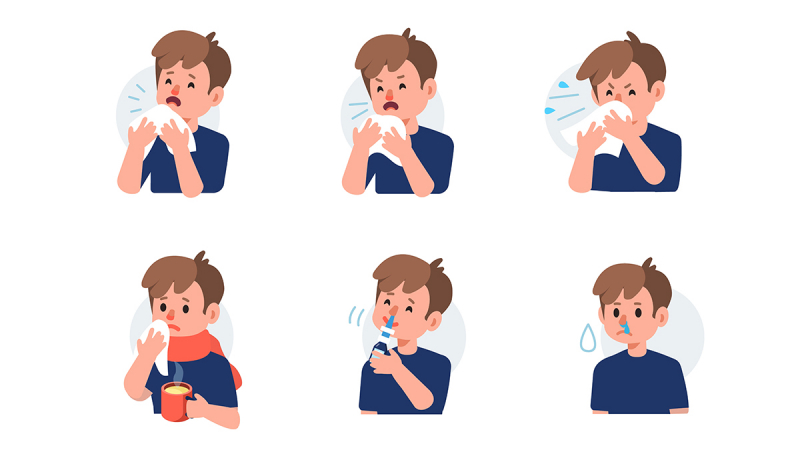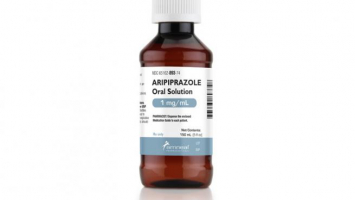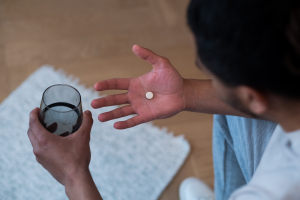Top 7 Things to Know About Cephalexin
Cephalexin is used to treat bacterial infections in many different parts of the body. It belongs to the class of medicines known as cephalosporin antibiotics. ... read more...It works by killing bacteria or preventing their growth. However, this medicine will not work for colds, flu, or other virus infections. This medicine is available only with your doctor's prescription. Read this article to understand more about Cephalexin.
-
Cephalexin is an antibiotic that can be used to treat infections caused by bacteria that are susceptible to it.
Cephalexin works by binding to and inhibiting the activity of enzymes that produce peptidoglycan, a component of the bacterial cell wall. Cephalexin is bactericidal (it kills bacteria) and functions similarly to penicillins. Cephalexin is known as a broad-spectrum antibiotic because it kills a wide variety of bacteria.
Cephalexin belongs to the cephalosporin antibiotic class. Cephalexin is a first-generation cephalosporin that primarily kills gram-positive bacteria.

Center for Health Reporting 
Wikipedia -
Treats a wide range of infections, including those of the respiratory tract, ear, genitourinary tract, bone, and skin.
Cephalexin is very effective against gram-positive staphylococci and streptococci bacteria, including susceptible isolates of Staphylococcus aureus, Streptococcus pneumoniae, Streptococcus pyrogens, Haemophilus influenzae, Klebsiella pnumoniae, Moraxella catarrhalis, and Proteus mirabilis.
It is possible to take it twice a day.
Cephalexin is typically administered at a dose of 250mg every 6 hours, but a dose of 500mg every 12 hours is also possible. For more severe infections, higher doses may be required. Treatment usually lasts 7 to 14 days.
Can be administered with or without food.
Generic cephalexin is available.

Sidra Medicine 
Vinmec -
If you are between the ages of 18 and 60, do not take any other medications, and have no other medical conditions, you are more likely to experience the following side effects:
- The most commonly reported symptoms are diarrhea, dyspepsia, abdominal pain, and nausea. Some laboratory tests may be affected. Seizures have only been reported in a few cases.
- Cephalosporins are also allergic to about 10% of people who are allergic to penicillin. Tell your doctor if you've ever had an antibiotic allergy.
- Positive direct Coombs tests have been reported in patients receiving cephalosporin antibacterials such as cephalexin.
- Cephalexin dosage must be adjusted for people with moderate-to-severe kidney disease.
- Severe diarrhea, caused by Clostridium difficile overgrowth, is a potential side effect of almost all antibacterial agents, including cephalexin. Diarrhea that is persistent, watery, and sometimes bloody is one of the symptoms.
- It may lengthen the time it takes for blood to clot. People who have liver or kidney disease, are malnourished, are on a long course of therapy, or are already on anticoagulants are more vulnerable.
- Some drugs, including metformin, probenecid, and some urinary glucose tests, may interact.
Note: People over the age of 65, children, people with certain medical conditions (such as liver or kidney disease, heart disease, diabetes, seizures), or people who take other medications are more likely to experience a broader range of side effects.

BuzzRx 
Practical Pain Management -
It is safe to take with or without food.
Take exactly as directed and for the time period specified. Even if you feel better, do not finish the course sooner than prescribed because this promotes the growth of resistant bacteria. Cephalexin should not be used for any other infection than the one for which it was prescribed. Cephalexin is not effective against viral infections such as the flu.
Seek medical attention if you develop chronic diarrhea while taking cephalexin or within a few months of finishing it.
If you experience any concerning side effects after taking cephalexin, such as abdominal pain, excessive bruising or bleeding, or a rash, consult your doctor.

GoodRx 
Simplefill -
Medicines that interact with cephalexin may reduce its effect, shorten its duration of action, increase side effects, or have no effect when combined. An interaction between two medications does not always necessitate the discontinuation of one of them; however, it can. Consult your doctor about how to handle drug interactions.
Cephalexin may interact with the following medications:- anticoagulants (blood thinners), such as warfarin (may prolong bleeding time)
- estradiol
- metformin
- other antibiotics, such as chloramphenicol, sulfonamides, macrolides, and tetracycline
- probenecid
- probiotics, such as Lactobacillus
- sodium picosulfate
- vaccinations, such as BCG, cholera, or typhoid vaccine (may diminish the effectiveness)
- vitamins, such as fat-soluble vitamins A, D, E, or K, folate, iron, or zinc (may decrease blood concentrations of cephalexin)
It should be noted that this list is not exhaustive and only includes common medications that may interact with cephalexin. For a complete list of interactions, consult the cephalexin prescribing information.

NPS MedicineWise 
BirBes

































